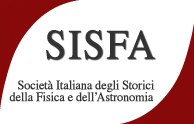Speakers
Description
n the present work a teaching method is presented, concerning the way that a sample of undergraduate students is instructed about two basic experiments in the history of Physics: The Young’s double-slit (interference) experiment and the Davisson - Germer experiment, which essentially proved that particles (electrons) do behave like waves(de Broglie hypothesis). The research question behind this research project is whether it is possible to teach students about the very important aspects of wave interference and wave properties of matter (Vokos et al., 2000) , by avoiding mathematical formalism and difficult Physics’ concepts as much as possible. There have been similar efforts in the past, in the area of educational research (Baily and Filkenstein, 2010; Krijtenburg-Lewerissa et al., 2017), but these efforts usually refer to students with a good physics and Mathematics’ background. The novelty here is that future educators - with weaknesses in Physics and with not an interest in Physics taken for granted - are addressed.
The students watch both the experiments in front of them, they have some level of interaction with what is happening and are interviewed, in semi-structured research interviews about: (i) what they predict that will happen, (ii) what they see happening and (iii) what they learned about it (meta-knowledge). The first experiment is executed both in its original form with water waves with laser light, but also in the alternative form with laser light. The second experiment is executed through computer simulations (phet colorado and others) (McKagan et al,. 2008) and animations.
Prior to the interviews with the N=6 students, N΄ = 2 were pilotically interviewed, in order to improve the interviews. Also the N=6 students were given a pre-test and a post-test questionnaire, so as to measure what they learned from this teaching and experimental sequence.
The results concerning the educational outcomes – given the limitations o the sample – are encouraging.
References
Baily, C., and Finkelstein, N., D. (2010). Teaching and understanding of quantum interpretations in modern physics courses. Physics Education Research, 6(1), 1-11.
Krijtenburg-Lewerissa, K., Pol, H., J., Brinkman, A., and van Joolingen, W., R. (2017). Insights into teaching quantum mechanics in secondary and lower undergraduate education. Physical Review, Physics Education Research, 13(1), 1-21.
McKagan, S., B., Perkins, K., K., Dubson, M., Malley,C., Reid, S., LeMaster, R., and Wieman, C., E. (2008). Developing and Researching PhET simulations for Teaching Quantum Mechanics. American Journal of Physics, 76 (4), 406-418.
Vokos, S., Shaffer, P., S., Ambrose, B., S., and McDermott, L., C. (2000). Student understanding of the wave nature of matter: Diffraction and interference of particles. Physics Education Research, American Journal of Physics, Suppl. 68 (7), S42-S51.

